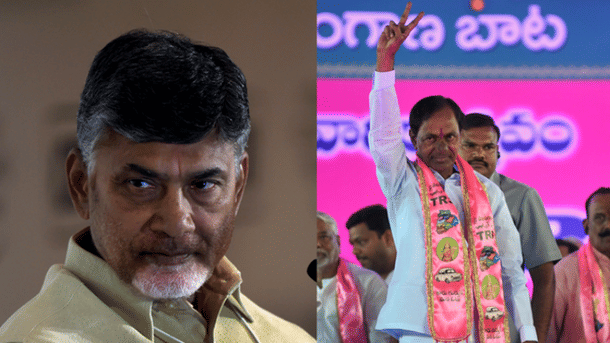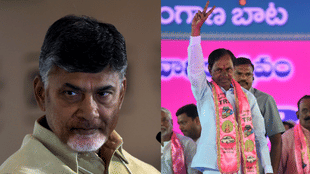Politics
Politics Of Appeasement: Why Liberation Day Is Hushed Up In Telangana
G Kishan Reddy
Sep 20, 2017, 02:59 PM | Updated 02:59 PM IST
Save & read from anywhere!
Bookmark stories for easy access on any device or the Swarajya app.


While several Indians celebrated Independence across the country on 15 August 1947, the state of Hyderabad could not unfurl the tricolour on this red-letter day since the then princely state was still under the Nizam’s rule and merged with the Indian union only on 17 September 1948 – the liberation day in the history of Telangana when it integrated with the Indian union.
While the liberation day is celebrated officially in Maharashtra and Karnataka, parts of which comprised the then Hyderabad Deccan region, the governments of Andhra Pradesh and Telangana remain silent out of fear of antagonising the Muslim minorities in Telangana that comprise 13 per cent of the population in the state. It is disheartening that the people of Hyderabad, the headquarters of the Nizam, who were subjected to a most oppressive and tyrannical rule, are not entitled to celebrate their true independence, thanks to Chief Minister K Chandrashekhar Rao (KCR) and his false promises.
The Nizam accorded enormous power to feudal landlords, who, in league with the ruler, misused it to exploit the masses. A collective group of people from all walks of life led a popular resistance movement called ‘Telangana peasant armed struggle’ starting from 1946, to fight the autocratic king and the atrocious feudal regime perpetuated by feudal landlords under the Nizam’s rule. With the common man also becoming politically active to oppose the rule, the freedom movement spread to the state of Hyderabad.
The integration of Hyderabad was not smooth. The Nizam refused to accede and organised a private militia called Razakars to achieve his independent ambitions. The Razakars, fearing the end of Muslim rule, instilled terror among people by looting, killing and raping anyone who spoke up against the Nizam’s rule. Urdu was given preference over native Telugu in administration and as a medium of instruction, thus making education and jobs inaccessible to locals.
Nefariousness against the people of Hyderabad was enough for Sardar Patel to send the Indian Army there to deal a final blow to the Nizam’s rule and integrate the princely state into the Indian union. Under intense pressure from India, the Nizam, already crippled by a lack of resources drained during earlier revolts by the people, acceded to the demand for liberation of Hyderabad. Thus, on 17 September 1948, Indian armed forces ended the 200-year-old Nizam rule, merging the vast region of Hyderabad Deccan, which comprised present-day Telangana and parts of Maharashtra and Karnataka with the Indian union. However, incidents leading to ‘police action’ and the immediate years thereafter contributed to some unprecedented dark moments in the communal history of Hyderabad.
The atrocities committed by Razakars are still fresh in the memories of survivors, and have left a scar in the hearts of people from the several villages that defied the Nizam’s rule. A desperate Nizam took to his close confidant, Qasim Rizvi, who was also the founding member and leader of Majlis-e-Ittehad-ul-Muslimeen (MIM), to suppress his opponents. The Nizam’s army was weak in number and, of the mere 24,000 men, only 6,000 were fully trained and equipped for battle. About 150,000 MIM volunteers came forward to help build up the Nizam’s army. These became the Razakars that would later unleash carnage in the princely state.
Bhairanpally, a tiny village in Warangal, had to sacrifice hundreds of its people to the bullets of the Razakars. When the villagers did not allow the Razakars to pass through when they were on their way to Karimnagar, they indiscriminately pillaged everything, molested women and lined up able-bodied men and shot them simply for amusement. Consequently, they looted and plundered every single village en route. Peasants of Parkal town in Warangal also put up a valiant resistance against the Nizam and his Razakars. When news reached residents of Parkal and the surrounding villages that India had won Independence on 15 August 1947, they decided to hoist the national flag and celebrate the occasion.
However, this patriotic fervour was rewarded with lathi charge and gun firing. Three people were tied to a tree and shot mercilessly at Rangapuram village. Women of Laxmipuram were raped and their gold and money were taken away by the Razakars. Referred to as ‘Jallianwala Bagh’ of the south by former prime minister P V Narasimha Rao, thousands of Telanganites had sacrificed their lives at the altar of this struggle for the liberation of the region. Mud forts and watchtowers used by villagers to take cover while firing at Razakars can be found even today in several villages where they stand witness to these sad memories and tragic wounds.
When there is a history of violence eclipsing the achievement of freedom, the latter runs the risk of remaining dormant. Characterising people’s struggle against the Nizam’s rule as a Hindu-Muslim fight is fundamentally wrong. Several Muslims also participated in the anti-Nizam revolt. One cannot forget the sacrifices of Shoaibullah Khan, the fearless editor of Urdu daily Imroz, who ended up paying with his life for being critical of the Nizam and his Razakars.
The Nizam was a rich king and his people pauperised. If the ruler was magnanimous towards his people, how could such a humongous gap exist? This speaks volumes about feudal and royal appropriation. Inherently, the struggle was against oppressive feudalism and fundamental rowdiness of the monarchy in the form of Razakars who were simply let loose on the people of Telangana by the then ruler to eternalise their feudal regime and monarchy. Giving it a communal twist is an instrument used in politics for minority appeasement or majority bashing.
During the movement for separate statehood for Telangana, KCR had promised to officially celebrate ‘Telangana Liberation Day’. When KCR came to power in June 2014, he chose to continue the policy of erstwhile Andhra Pradesh and remained silent during the official celebrations on 17 September. KCR is backtracking on his promise out of political expediency and minority appeasement and is only calculating votes. In order to assuage the minority vote bank, he has also expanded the reservation quota of Telangana Muslims which will not stand the test of constitutionality. KCR needs to make a choice between the Razakars and the people of Telangana.
The Bharatiya Janata Party has been at the forefront of this cause and, supported across party lines, has been educating people about this historic episode and generating awareness among them for the past 18 years. Why is Chief Minister KCR hesitating to acknowledge and commemorate this significant event? Recognising this historical moment is a step towards dedicating this day to the struggle of the people of Telangana.
Most people of Telangana acknowledge 17 September as the historic day when Telangana integrated into the Indian union, thus letting us appraise our local history. While we hoist the national flag on 15 August every year to celebrate our country’s Independence, we were truly freed only a year later. Every patriotic and proud Indian in Telangana should be allowed to commemorate this day as a day of Telangana’s tryst with India’s destiny.
(The writer is floor leader, BJP, Telangana legislative assembly)
G Kishan Reddy is the Minister of State for Home Affairs and represents the Secunderabad Lok Sabha constituency.





